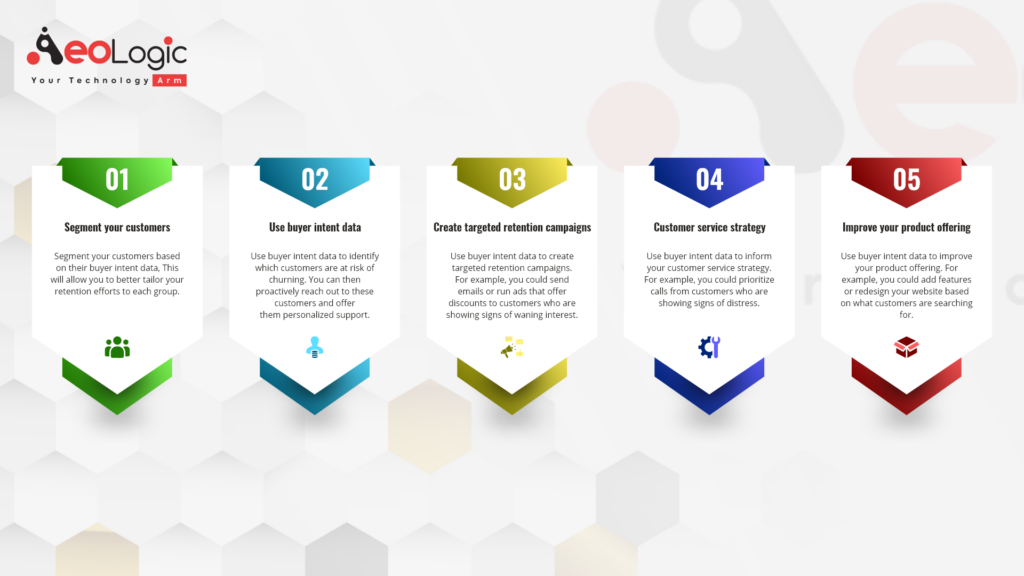If you’ve ever navigated Facebook or Instagram and wondered how the algorithm knows what to show you, then this article is for you. The algorithm is tuned to your interests and preferences, which means that it’s always showing you things it thinks will interest you. It’s not just about showing you ads – if a like-minded user liked an article or photo of yours, then their positive feedback will raise its ranking in your feed.
According to Akamai, in 2017 nearly 90% of global internet traffic will go through a CDN. This is an incredible statistic–and is largely due to the increasing demand for speed across web browsing and streaming services.
As marketers, it’s our job to understand the customer journey. Marketers are notorious for trying to sell more, sell faster, and make more money. But what if we’re missing a key point in the marketing equation: understanding the customer journey?
What is Buyer Intent Data?
When it comes to online marketing, buyer intent data is becoming increasingly important. This data can help you understand what your customers are looking for and how they intend to purchase a product or service. By understanding this data, you can tailor your marketing efforts to better meet the needs of your customers and improve customer retention.
There are a few different types of buyer intent data, but the most common is search engine data. This data can be used to track what people are searching for online and how they are interacting with search results. This information can be extremely valuable in understanding what potential customers are interested in and how best to reach them.
Another type of buyer intent data is social media data. This data can be used to track what people are talking about online and how they feel about certain products or services. This information can be helpful in understanding what potential customers want and how you can better meet their needs.
Finally, web analytics data can also be used to track buyer intent. This data includes information on how people are interacting with your website and what kinds of things they are interested in. This information can be helpful in understanding what potential customers want and how you can better meet their needs.
By understanding buyer intent data, you can tailor your marketing efforts to better meet the needs of your customers and improve customer retention.
Also Read: Improve Your B2B Programmatic Advertising Using Intent Data
How to Interpret Buyer Intent Data
When looking at your buyer intent data, there are a few things to keep in mind to ensure you’re interpreting it correctly. First, consider the context in which the data was collected. Was it collected through online research or offline conversation? This will affect how you interpret the data.
Next, consider the source of the data. Was it collected from a small group of buyers or a larger sample? This will also affect your interpretation.
Finally, consider the timeframe in which the data was collected. Is its current data, or older data? This is important to consider because buyer intent can change over time.
Keep these things in mind when interpreting your buyer intent data, and you’ll be able to use it effectively to retain customers.
Why is Buyer Intent Data Important?
Buyer intent data is important because it tells you what your customers are thinking and feeling at each stage of their journey. This information can help you create more targeted content and campaigns, as well as improve your overall retention strategy.
When customers are actively searching for a product or service, they are in what is known as the “awareness” stage. At this point, they may not be familiar with your brand, but they are aware that they have a need or want that needs to be filled.
As such, it’s important to create content that educates them about their options and how your product or service can help them. Once they’re ready to take action, they’ll move into the “consideration” stage.
At this point, they’ll start comparing different products and services to find the best option for their needs. If your brand offers a competitive advantage, such as a lower price point or superior quality, make sure this is clear in your marketing communications.
Finally, when customers are ready to make a purchase, they’ll enter the “decision” stage. This is where buyer intent data can really come in handy. By understanding what customers are looking for at each stage of their journey, you can ensure that you’re providing them with the right information at the right time to help them make a decision in your favor.
Also Read: How to Use Intent Data to Run Better Outbound Campaigns
How to Use Buyer Intent Data to Retain Customers
As a business owner, you’re always looking for ways to improve your customer retention rates. After all, it costs far more to acquire a new customer than it does to keep an existing one.
One way you can achieve this is by using buyer intent data. This data refers to the specific actions that people take online that indicate their level of interest in making a purchase.
For example, someone who searchers for “best running shoes for beginners” is likely further along in the buying process than someone who searches for “how to start running.”
By tracking this data, you can better understand where your customers are in their buying journey and what type of content or offers they’re most likely to respond to.
This information can then be used to create more targeted email campaigns, social media ads, and even website content that speaks directly to your audience’s needs and interests.
In short, using buyer intent data is an effective way to boost customer retention rates by ensuring that your marketing efforts are always aligned with what your customers actually want and need.
5 Ways to use Buyer Intent Data to Improve Customer Retention

1. Segment your customers
Segment your customers based on their buyer intent data. This will allow you to better tailor your retention efforts to each group.
2. Use buyer intent data
Use buyer intent data to identify which customers are at risk of churning. You can then proactively reach out to these customers and offer them personalized support.
3. Create targeted retention campaigns
Use buyer intent data to create targeted retention campaigns. For example, you could send emails or run ads that offer discounts to customers who are showing signs of waning interest.
4. Customer service strategy
Use buyer intent data to inform your customer service strategy. For example, you could prioritize calls from customers who are showing signs of distress.
5. Improve your product offering
Use buyer intent data to improve your product offering. For example, you could add features or redesign your website based on what customers are searching for.
Why is Customer Retention Important?
Customer retention is important for a number of reasons. First, it costs much less to keep a customer than it does to acquire a new one. In fact, it is estimated that it costs five times as much to attract a new customer than it does to keep an existing one.
Second, loyal customers are more valuable than one-time buyers. They are more likely to make repeat purchases, and they also tend to spend more over time.
Third, happy customers spread the word about your business to their friends and family members. This word-of-mouth marketing is one of the most effective forms of advertising and can help you attract even more customers.
Finally, retaining customers helps build long-term relationships with them. These relationships are beneficial for both parties involved and can lead to even more business down the road.
Also Read: Benefits of Security Automation
Conclusion
If you’re looking for a way to keep your customers coming back, using buyer intent data is a great option. By understanding what your customers are interested in and what they’re looking for, you can create targeted content and offers that will appeal to them. Not only will this help you retain existing customers, but it can also attract new ones.
So if you’re not already using buyer intent data to inform your marketing strategy, now is the time to start. If you’re not already using intent data in your advertising, now is the time to start.
Feel free to schedule a free 60-minute consultation with one of our experts. We’ll talk about the opportunities and address any concerns you may have. Our consultants will suggest solutions and outline how they can be implemented. Let’s talk!
Related Blogs:
- How AI/ML Can Change the Public Transportation Industry
- Transforming Business With Digital Technology in the Oil Palm Industry in India
- Importance of Digital Asset Management in the Retail Industry
- How AI is Transforming the Agriculture Industry
- 10 Ways to Use Artificial Intelligence to Improve Business Processes
- The Future of IoT Technology in Convenience Stores
- Building Manufacturing Resilience Through AI and ML






